|
From the Director: Assessment Oversight Panel

Last week we held our Assessment Oversight Panel meeting, a critical step in the management track assessments process. This meeting brought together the panel members and a number of partners and stakeholders representing multiple organizations. The panel determined the appropriate level of peer review for each fish stock to be assessed in June 2021. The reviewed stocks included: golden tilefish, summer flounder, bluefish, black sea bass, scup, and Atlantic mackerel. I would like to personally thank all who participated and their affiliated organizations for their valuable input. These organizations include the New England and Mid-Atlantic Fishery Management Councils, Atlantic States Marine Fisheries Commission, New Jersey Department of Environmental Protection, North Carolina Division of Marine Fisheries, University of Southern Mississippi, University of Massachusetts Dartmouth's School for Marine Science & Technology, Lund’s Fisheries, the tilefish industry, and NOAA Fisheries (science center and regional office). Cheers, Jon Hare
|
Woods Hole, MA: Birthplace of NOAA Fisheries
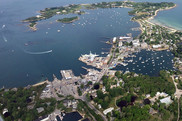
When the U.S. Fish Commission was established in 1871, there was not much question as to who should lead the special investigation into a serious food fish decline off southern New England. Spencer Baird ticked a number of boxes—prominent scientist, already in the government, willing to work in the job without additional pay—and he knew just about everyone in the field. He also had a demonstrated track record for attracting Congressional interest and funding for his work. Much has been written about Baird’s subsequent accomplishments in the job. But what led to the decision to site the first permanent federal fisheries laboratory in Woods Hole, Massachusetts?
|
Longfin Squid Fishing Footprint
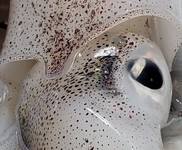
Our Cooperative Research Branch, in collaboration with the University of Massachusetts School for Marine Science and Technology, is using Study Fleet and fisheries observer data to evaluate potential impacts on commercial fishery operations due to offshore wind energy development. Using the longfin squid fishery as a case study, the team is estimating fishery footprints and potential fishery displacement. The team is specifically exploring how the resolution of fishing effort data (haul-level vs. trip-level) impacts understanding of fishing operations, fishery footprints, and potential displacement. Stay tuned for more news to come as this collaborative research project moves forward.
|
NOAALive! 2021 Features Woods Hole Lab
Black History Month with NOAA Fisheries
Science in the Classroom
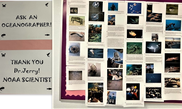
What happens when a volunteer teacher and a NOAA Fisheries chief scientist stay in touch after a cruise? In 2013 Sue Cullumber, a NOAA Teacher-at-Sea, joined the science staff on the NOAA Ship Gordon Gunter for the Summer EcoMon Survey. On the Gunter she met Jerry Prezioso, an oceanographer with the Oceans and Climate Branch at our Narragansett lab. Recently, Sue sent Jerry an extensive list of questions about marine science from her students. He responded with answers that included descriptive photographs he had taken, and the “Ask an Oceanographer” bulletin board at the Banner Academy in Arizona was born!
|
New Storymap: Atlantic Sea Scallop Fishery
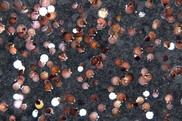
The Atlantic sea scallop fishery is one of the most successful fisheries in the country. In 2019, commercial landings of Atlantic sea scallops totaled more than 60.6 million pounds of sea scallop meats and were valued at approximately $570 million. Our regional office developed this interactive story map to tell the tale. You can also learn more about the Research Set-Aside Program, and how this partnership among councils, fishermen, and scientists takes on important research and resource evaluation questions.
|
Meet Audy Peoples, Fish Biologist
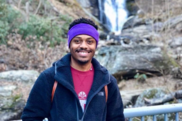
Audy’s love for the sea was developed early on, having grown up around the water. In grade school when his peers aspired to be police officers and astronauts, Audy’s dream was to study the ocean, and for Audy a job with the federal government was an American dream. Meet Audy Peoples, a fish biologist in our Narragansett, Rhode Island Laboratory who is working to develop a database of longfin squid para-larval abundance from archived samples.
|
Meet Sheila Stiles, Research Geneticist
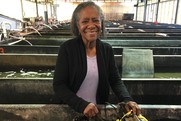
Sheila Stiles, a research geneticist, is also the first full-time African-American woman hired at the Milford Laboratory. Sheila has spent more than 50 years advancing research in shellfish genetics and recruiting/mentoring the next generation of scientists. Her current research focuses on mussels and encompasses three components: breeding, molecular genetics using DNA/RNA analysis, and field evaluations for stock restoration and analysis.
|
|
|
Upcoming Events and Announcements
Mar 3 NOAALive! Webinar: 150 Years and Counting: Studying Fish, Fisheries and More at the Woods Hole Laboratory and Science Aquarium
Mar 4 Educator Workshop: Building Your Climate Story
Mar 4 Cooperative Research: Facing the Challenges of COVID-19; Filling the Gap with Self-Reported Data
Mar 8 2021 Atlantic Salmon Habitat Restoration Partnership Grants Public Webinar
Mar 9-12 Public Scoping Meetings on the Saltonstall-Kennedy Research and Development Program
Mar 17 Educator Webinar: Civic Action Projects
Mar 17 Update on Town Brook Herring Restoration Webinar
April 12 $1 Million Available for Atlantic Salmon Habitat Restoration Projects
Apr 23 Deadline for Entries: Annual K-12 Endangered Species Art Contest
Apr 26 NOAA Chesapeake Bay Office Fisheries Research Funding Opportunity
|
|
|
|
|